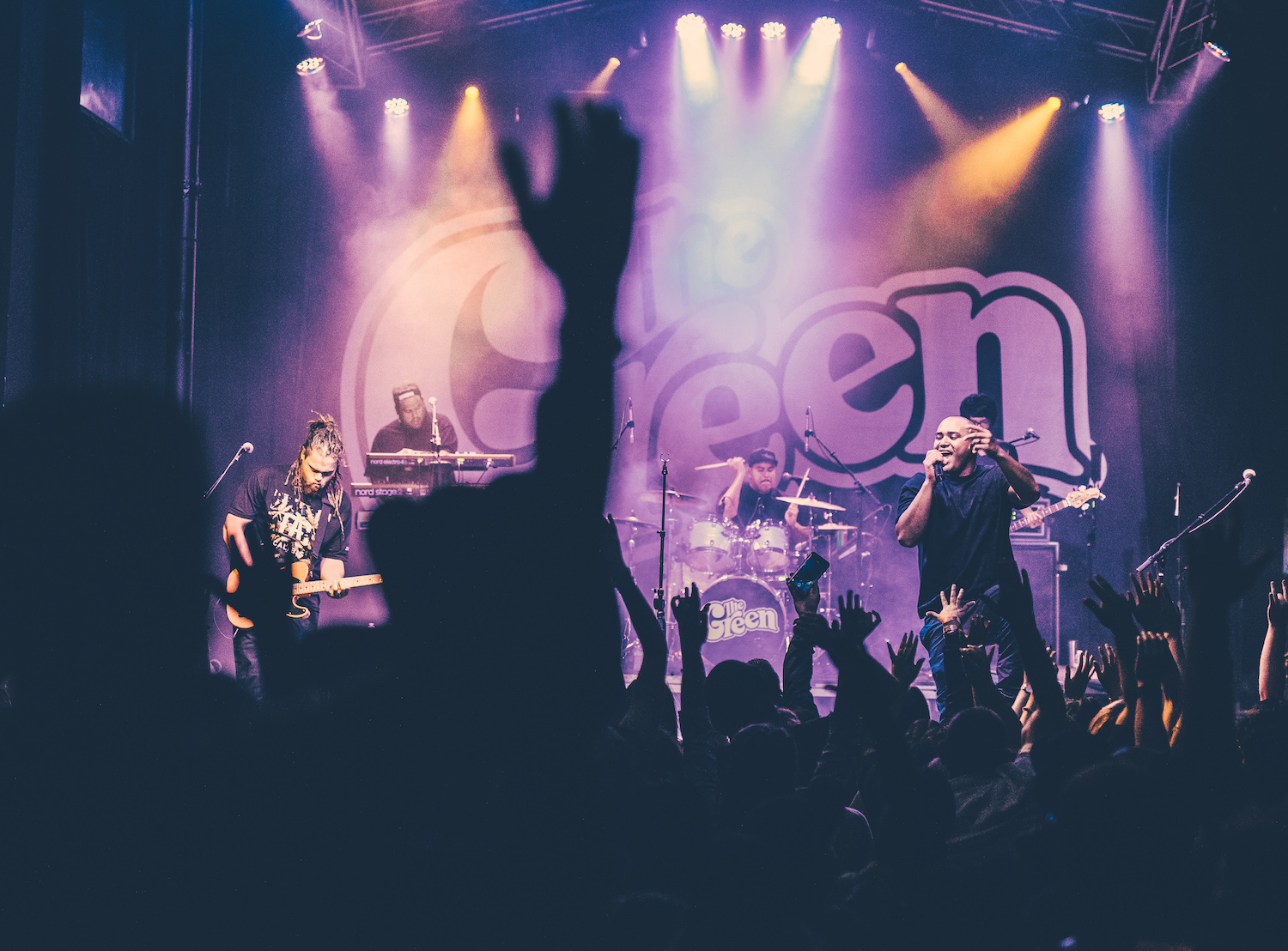Eight years and four albums later, The Green continues to broadcast its island vibes and aloha spirit across the country.
You can’t see the beach from the urban Kalihi studio space where The Green practices, but the band’s brassy, bouncy melodies are enough to transport you there. The six-piece Oʻahu band, comprised of lead vocalist Caleb Keolanui, guitarists JP Kennedy and Zion Thompson, keyboardist Ikaika Antone, bassist Brad Watanabe, and drummer Jordan Espinoza, unbox their instruments, tune their strings, and run through a few vocal harmonies. It’s jamming time.
Since 2009, The Green has been spreading feel-good musical vibes throughout its island home and beyond. This January, the group will tour its recently released album, Marching Orders, on a cross-country, multi-city scale. With hardly more than a 24-hour break scheduled between sets, the demanding upcoming schedule illustrates how seasoned the bandmates have become since their humble beginnings as a group nearly a decade ago.

Before forming The Green, each member’s social circles already overlapped—Keolanui and Kennedy are cousins, and the rest all came of age in Kailua or Hawai‘i Kai. When Keolanui and Kennedy set out to form the band, they called on high school friends Antone and Thompson. They have had their tunnel vision on The Green ever since.
Now the band is all grown up, its shows selling out to a devout fan base across the continental United States. “At this point in our career, we’re reaching the years that are really going to define us as a group,” Kennedy says. The Green’s latest output, Marching Orders, is the band’s most mature work to date, continuing the stirring fusion sound that pushes beyond the confines of contemporary Jawaiian, a blending of Jamaican reggae with Hawaiian styles.
“We don’t like to use the term ‘Jawaiian,’” says Antone, of The Green’s sound. “It was definitely an influence on us. Everyone in Hawaiʻi grew up listening to that music—you can’t avoid it here.” While he cites seminal Jawaiian groups like Steel Pulse as inspirations, he also gives examples of curveball influences, from rap to country. “I think Hawaiʻi has its own brand of reggae, and it’s surpassed [Jawaiian] with the amount of experience local bands are getting by playing in the States.”
For the bandmates, being able to tour and spread this unique musical perspective across the country has been a blessing. The roots of their performances can always be traced back to the Hawaiian homeland of The Green, says Thompson. It’s about “conducting ourselves a certain way and representing Hawai‘i well. We’re being ourselves and just doing our own thing, and trying to make the most of it to make an impact.”

